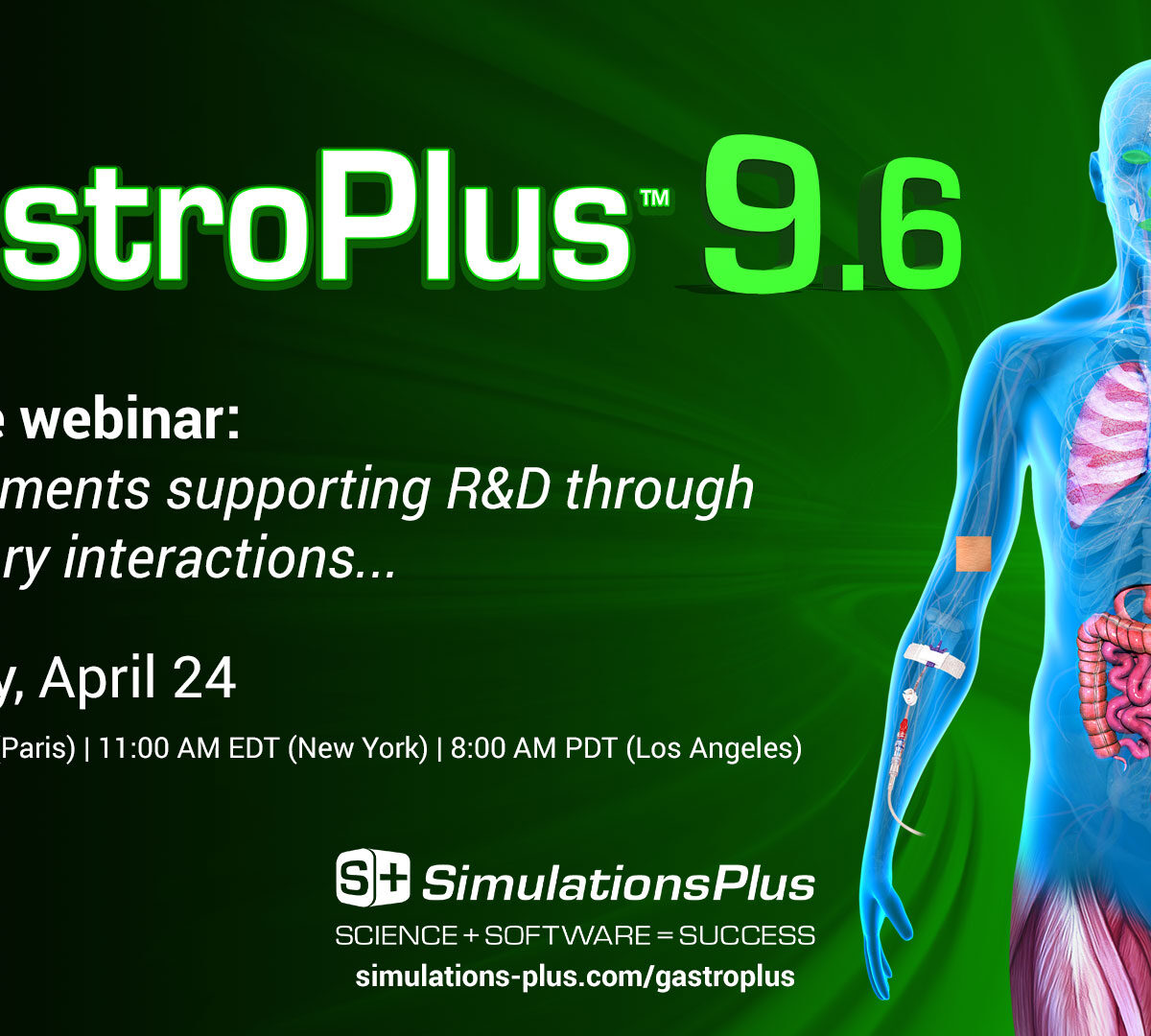PBPK modeling and simulation can be successfully used in the lead optimization phase of drug discovery. Using CLloc, accurate bioavailability can be predicted for new compounds in a chemical series.

Development of Positron Emission Tomography Radiotracers for the GABA Transporter 1
in vivo positron emission tomography (PET) imaging of the γ-aminobutyric acid (GABA) receptor complex has been accomplished using radiolabeled benzodiazepine derivatives, but development of specific…

Predicting mammalian metabolism and toxicity of pesticides in silico
Pesticides must be effective to be commercially viable but they must also be reasonably safe for those who manufacture them, apply them, or consume the food they are used to produce.

Microarray Plate Method for Estimation of Precipitation Kinetics of Celecoxib under Biorelevant Conditions and Precipitate Characterization.
Study methodologies of supersaturated state are fast developing as pharmaceutical industry is adopting supersaturating drug delivery systems (SDDS) to overcome the solubility issue of drugs.

Automated techniques in pKa determination: Low, medium and high-throughput screening methods
Drug discovery programs that generate hundreds of new molecular entities need efficient methodologies for physicochemical profiling.

US FDA Procures DILIsym Software License Package
US FDA Continues Its Goal of Propelling Model-Based Drug Development Forward

Ionization effects in GastroPlus®
This video discusses how the ionization of a molecule effects its dissolution and absorption.

The OECD Principles for (Q)SAR Models in the Context of Knowledge Discovery in Databases (KDD)
The steps followed in the knowledge discovery in databases (KDD) process are well documented and are widely used in different areas where exploration of data is used for decision making. In turn, while…

Using Liver Microsomal clearance in GastroPlus®
This video demonstrates how to enter liver microsomal data into GastroPlus with the unit converter and importing the values during structure input.

In vitro/in silico approach in the development of simvastatin-loaded self-microemulsifying drug delivery systems.
The aims of this study were to formulate simvastatin (SV)-loaded self-microemulsifying drug delivery systems (SMEDDS), and explore the potential of these drug delivery systems to improve...

Simulations Plus Announces Employee Bonuses
Simulations Plus, Inc. (NASDAQ: SLP), the premier provider of simulation and modeling software and consulting services for all stages of pharmaceutical discovery and development, today announced that it will be distributing a one-time $1,000 discretionary cash bonus to each of its employees.

GastroPlus™ 9.6 Release Webinar: Improvements Supporting R&D Through Regulatory Interactions
We are pleased to announce the release of GastroPlus™ 9.6! These improvements in our top-ranked PBPK modeling platform support discovery/preclinical/clinical R&D work through regulatory interactions.

Applying the QSP Model NAFLDsym® to Predict and Understand NASH Treatments
NAFLDsym is a mechanistic, mathematical, QSP model 1. Can predict efficacy for compounds that modulate lipids and/or lipotoxicity with v1A 2. NAFLDsym v2A will also include inflammation and fibrosis submodels…

Population Pharmacokinetics, Exposure-Efficacy, and Target Attainment Analyses of Tedizolid in Japanese and Chinese Subjects
Methicillin-resistant Staphylococcus aureus (MRSA) remains a threat for healthcare systems globally.1 MRSA frequently causes healthcare-associated infections and is associated with increased morbidity…

Exploring Pharmacokinetic SARs Early in Drug Discovery
Late-stage attrition due to obviously bad physicochemical properties has been reduced by application of rules-ofthumb like Lipinski’s Rule of Five. Failure due to lack of efficacy remains a major issue.

The Influence of Dissolution, PMAT Influx, and MATE Efflux Rates on Paracellular Absorption of Metformin Using a Mechanistic Oral Absorption / PBPK Model
A physiologically based absorption and distribution model was developed for metformin to facilitate our understanding of the influence of transporters and dissolution rate on oral absorption.

Predicting Five Rat Acute Toxicity Endpoints with ANNE Models
Used ANNE technology to develop regression and classification models. Curation identified activity cliffs and questionable LD50 values. Model applicability domain is defined by the minimum and…

Exposure-safety and efficacy response relationships and population pharmacokinetics of eslicarbazepine acetate
Eslicarbazepine acetate (ESL) is a once-daily (QD) oral antiepileptic drug (AED) for focal-onset seizures (FOS).

Adding OATP and MRP-2 transporters to PBPK models in GastroPlus®
This video shows how to add OATP and MRP-2 transporter kinetics to PBPK models.
